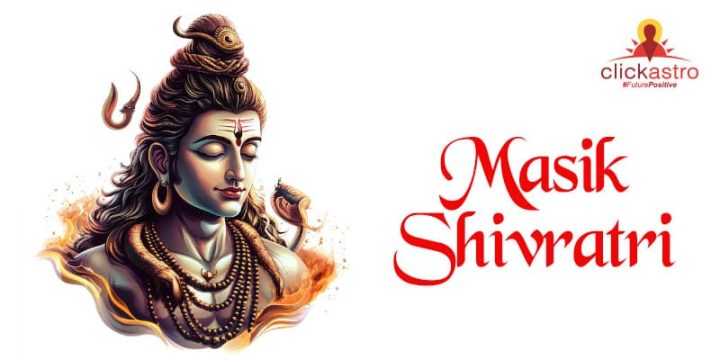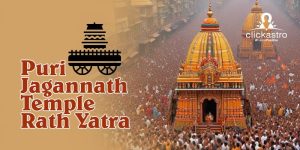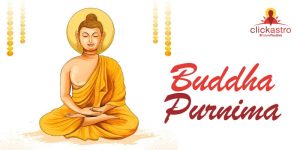Masik Shivaratri: The Night Of Shiva
What is Masik Shivratri?
Masik Shivratri or Shivaratri is observed on the 14th night of the waning phase of the Moon. In other words, Chaturdashi night of the Krishna Paksha. As the name indicates, this night occurs once every lunar month. This is the day when Lord Shiva is worshipped. It is believed that Shiva manifested in the form of a lingam on this day. It is also seen as the convergence of Shiva and Shakti, which the lingam symbolizes. The word Shivratri or Shivaratri literally means the night of Shiva. Special pujas are held for Lord Shiva, and devotees observe fast on this day. Visiting temples dedicated to Lord Shiva is considered auspicious. Fasting on Shivaratri day is good for physical and mental health. Worshipping Shiva on this day helps one attain moksha.
Read about Maha Shivratri: The Great Night of Shiva
Masik Shivratri 2025 List
Shivratri happens once every lunar month. However, this need not always be the case when one considers the solar calendar. There are 12 Masik Shivratri 2025 dates – one each month. The following is the list of dates of the 2025 Masik Shivratri- Masik Shivratri January 2025 – Monday, 27 January
- Masik Shivratri February 2025 – Wednesday, 26 February
- Masik Shivratri March 2025 – Thursday, 27 March
- Masik Shivratri April 2025 – Saturday, 26 April
- Masik Shivratri May 2025 – Sunday, 25 May
- Masik Shivratri June 2025 – Monday, 23 June
- Masik Shivratri July 2025 – Wednesday, 23 July
- Masik Shivratri August 2025 – Thursday, 21 August
- Masik Shivratri September 2025 – Friday, 19 September
- Masik Shivratri October 2025 – Sunday, 19 October
- Masik Shivratri November 2025 – Tuesday, 18 November
- Masik Shivratri December 2025 – Thursday, 18 December
Why is Masik Shivratri Celebrated?
Shivratri, which is the Chaturdashi night of Krishna Paksha, is believed to mark the divine convergence of Shiva and Shakti that is Lord Shiva and Goddess Parvati.
According to one story in ancient history, Lord Shiva manifested in the form of a lingam on this night. It so happened that there arose an argument between Lord Vishnu and Lord Brahma on who was better. While they were debating, a column of fire appeared between them. Neither could see either end of the column. So, Vishnu and Brahma agreed that whoever finds the end of the column of fire wins. Brahma flew up as a swan to find the top end, while Vishnu took the form of a boar to find the bottom end. Both of them failed. But Brahma lied, saying he had found the top end. Then, Lord Shiva appeared out of the column of fire or lingam and reprimanded Brahma. As punishment, he said Lord Brahma would not have a temple dedicated to him on Earth. This day which saw Lord Shiva manifest as a lingam, was marked as Shivratri.
In another story, it is said that when the Devas and Asuras were in the process of Samudra Manthan, or the churning of the Milky Way, the first thing to appear out of the cosmic ocean was poison which threatened the very existence of the universe. To save the world, Lord Shiva drank this poison. His wife, Goddess Parvati, got hold of his throat to prevent the position from reaching other parts of his body. She kept the hold for one day and night. Eventually, the poison settled in the throat of Shiva, which turned blue, giving Lord Shiva the title of ‘neelakanda’, or one with the blue throat. This event happened on the Chaturdashi day of Krishna Paksha, which has been dedicated to Lord Shiva ever since.
Worshipping Lord Shiva and observing fast on this day enables the devotee to fulfill wishes and overcome obstacles. Women observing the fast get husbands of their desire. Married women observe Shivratri fast for the betterment of the lives of their husbands and sons.
How is Masik Shivratri Celebrated?
On Masik Shivratri, Lord Shiva is worshipped in the form of a lingam, which represents the power of fire as well as the convergence of Shiva and Shakti. Chanting ‘om Namah Shivaya during day and night will do good to the mind and body of the devotee. It is customary to observe vrat or fast during the day of Shivratri. Start the day with a bath early in the morning. Light a Diya and a few incense sticks and pray. Visit a Shiva temple and offer honey, sandalwood paste, milk, coconut water, bel leaves, fruits, and flowers to worship the lingam. Chant ‘om Namah Shivaya throughout the day. The Shivaratri Puja is carried out at midnight. ‘Abishek’ is performed on the lingam where devotees offer milk, ghee, honey, and rose water, among other things. Devotees then take prasad. The fast ends with Parana the next morning.
Read about Akshaya TritityaWhat Can You Eat on Masik Shivratri?
It is customary to observe a ‘nirjala’ fast during Masik Shivratri. In this fast, the devotee will not eat or drink anything till the period of fasting is over. However, this may not be practical for everyone. For such people, consumption of sattvic food is considered ideal. Potatoes cooked without using onion, garlic, ginger or turmeric, non-grain dishes, spices, milk desserts, and fruits both fresh and dry are the food items one is allowed to consume during the fasting period. Salt, rice, wheat, pulses, lentils, and meat should not be consumed during this time.
Which Drink is Associated with Shivratri?
Milk and honey are the two important liquid foods offered to Lord Shiva during Masik Shivratri. So it is natural that milk-based drinks are the ones most associated with Shivratri. Several refreshing beverages like Thandai, Badam Doodh (almond milk), Makhan Ki Kheer, Sabudana Kheer, etc., are popular among devotees who observe fasts on this day. Among them, Thandai is the most popular and most synonymous with Shivratri. The use of peppercorn, almonds, fennel seeds, and poppy seeds, along with saffron, cardamom, and rose water, helps bring a cooling effect into the body. Thandai, the word itself, means cold in Hindi.
Somvar Vrat : Strengthen Your Moon and Please Lord Shiva
Why is Lord Shiva Offered Bel Leaves on Shivratri?
Bel leaves are considered special during the worship of Lord Shiva. The trifoliate leaves represent the Trimurtis – Brahma, Vishnu and Shiva. It is also seen as a symbol of the trisul, Shiva’s weapon of choice. It is believed bel leaves can bring positive energy into the surroundings while absorbing the negative ones. It is considered to give off a cooling effect. Bel leaves also have medicinal properties. Devotees believe bad karma gets destroyed when bel leaves are offered to Lord Shiva.
Masik Shivratri Benefits
Observing the Masik Shivratri vrat helps in the good maintenance of body health. Worshipping Lord Shiva on this day brings various advantages like the cure for diseases, health and happiness in the family, progress in career, freedom from enemies, and fear of death. It paves the way for achieving spiritual success in life and eventually moksha from the cycle of birth and rebirth. Unmarried women who observe the Shivratri vrat will get a husband of their desire. Married women observe the vrat to maintain peace in family life and for the betterment of the lives of the male members of the family.
Get Your Detailed Horoscope
Is Shivratri Good or Bad?
Worshipping Lord Shiva and observing vrat on Shivratri day is considered good. It helps improve the overall quality of your life and those around you. However, doing or not doing certain things on this day will make Shivratri a bad experience for you. Do not wear black clothes on this day. Avoid eating rajasic and tamasic foods. Do not use turmeric or Tulsi or the flowers of Champa and Ketki for the worship of Lord Shiva. Respect your elders and strive to achieve their goodwill. This will ensure Shivratri is good to you.







